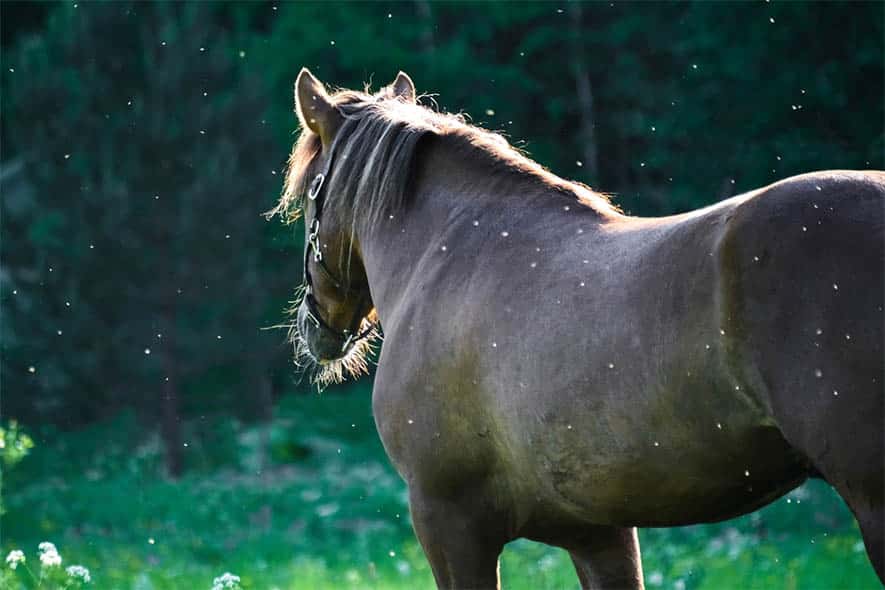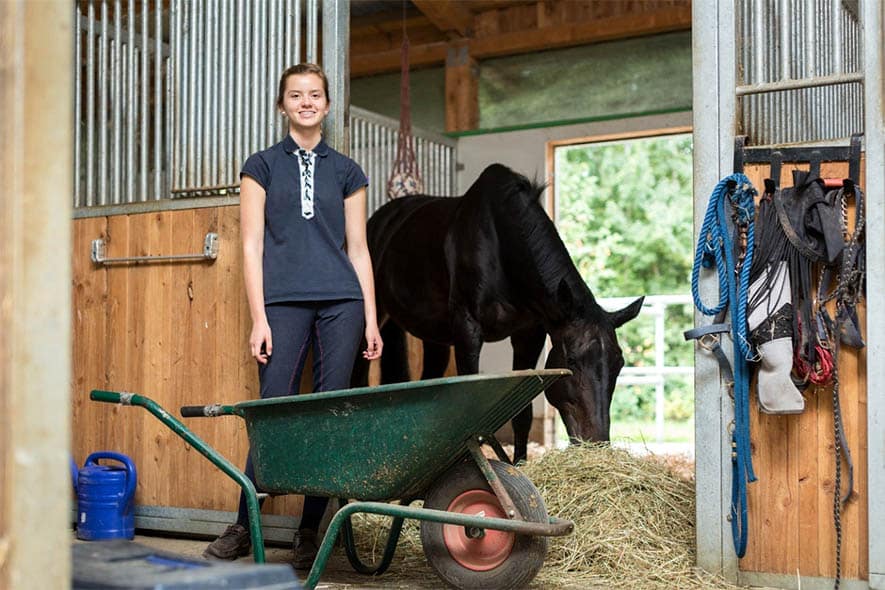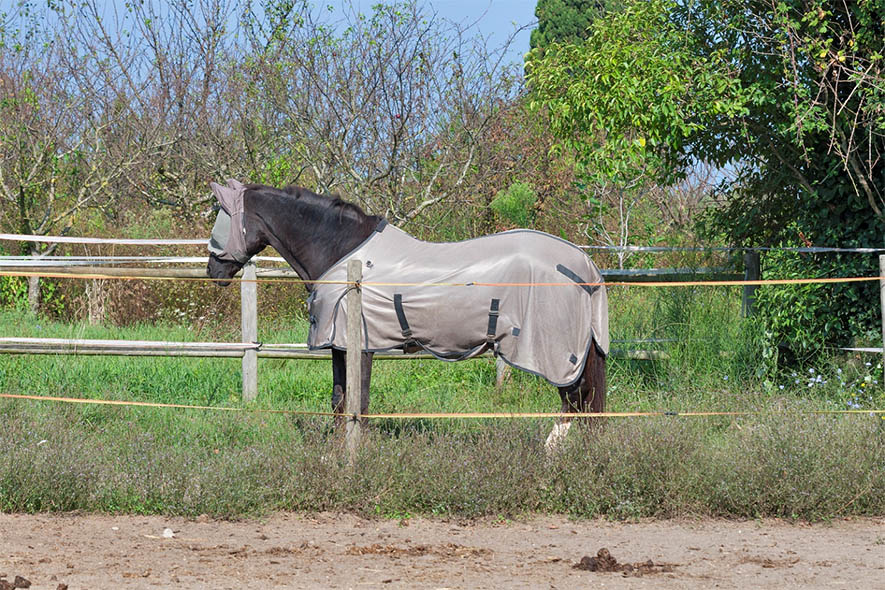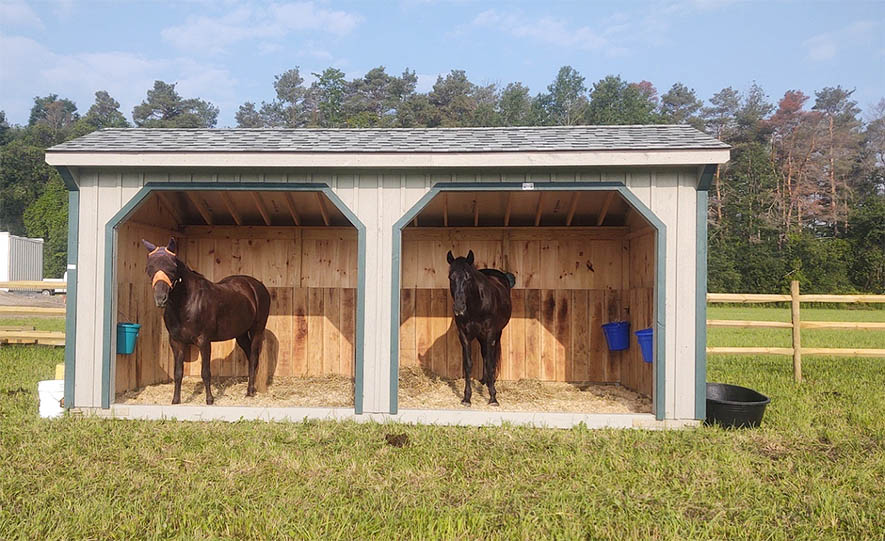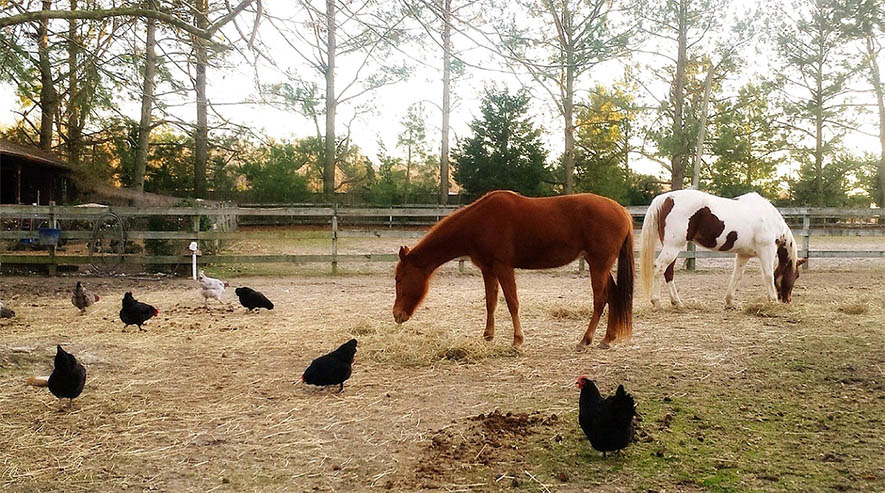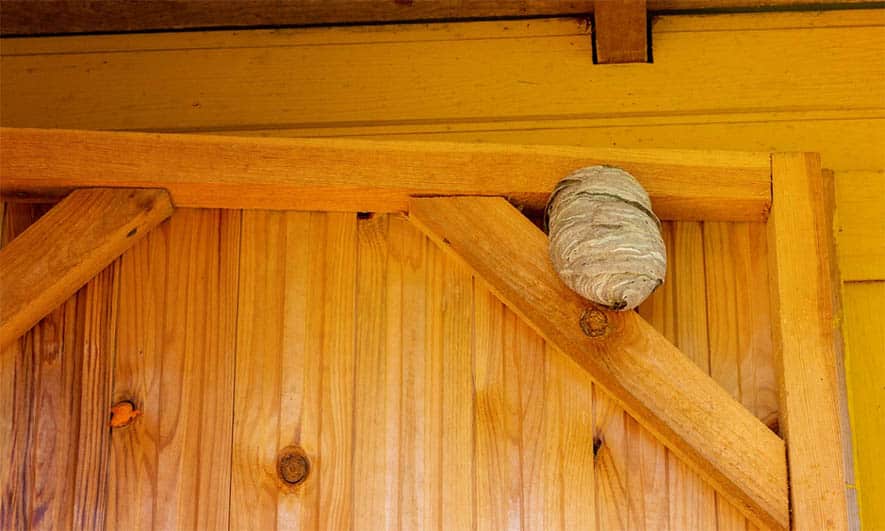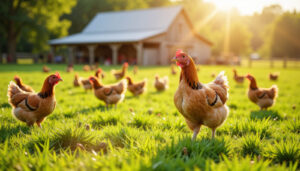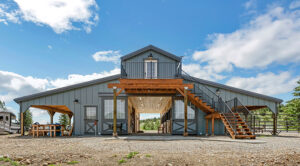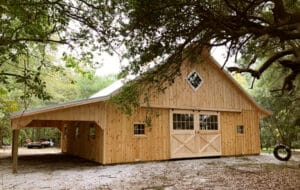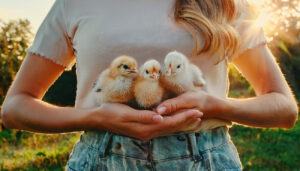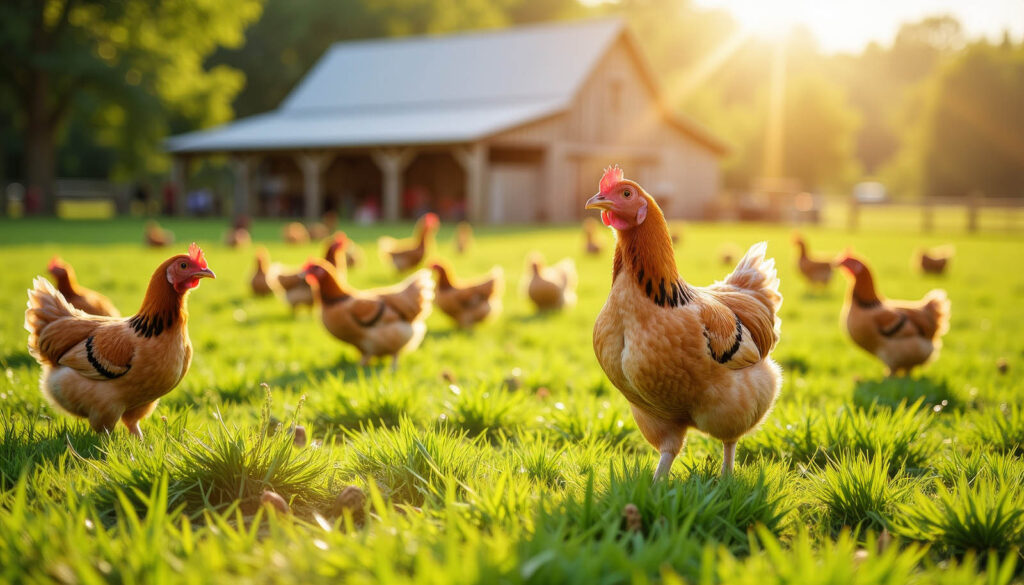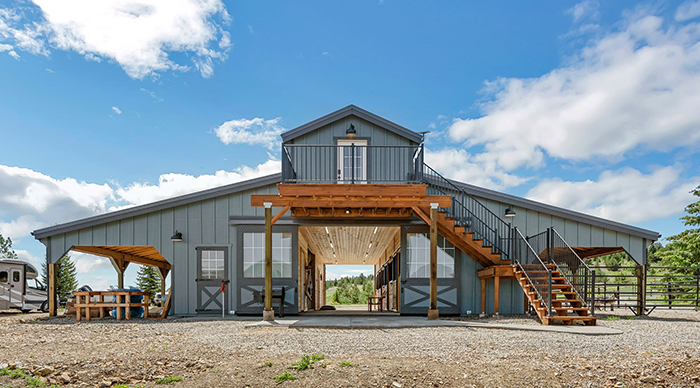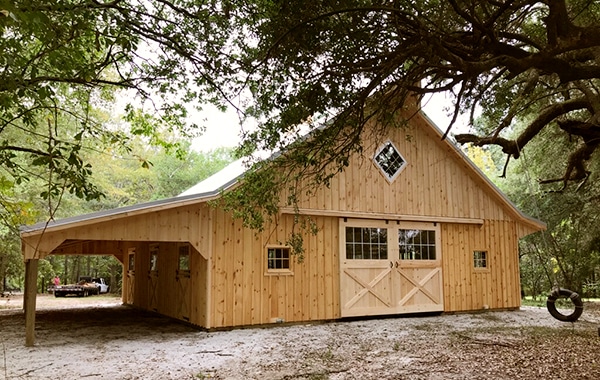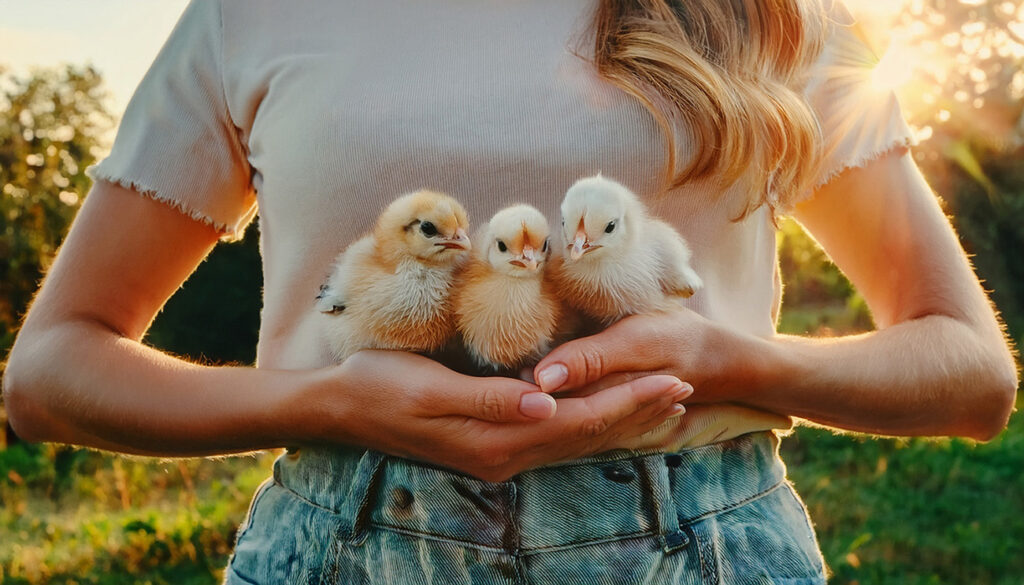Hatching a plan to deter the dastardly pesky biting bugs and flying insects from wreaking havoc at the horse farm is a good idea to ease the distress insect life can cause to horse and human.
Aside from mosquito-borne disease concerns such as Zika, Eastern and Western Encephalitis and the West Nile virus, the daily torrent of everything from tiny biting midges to giant pale horse flies that invade the horse farm can make life miserable for man and beast.
Here are a few ideas to help assuage the problem of bugs and flies on horses:
The Manure and Moisture Magnet
The dining delights for many insects include a handy supply of manure and moisture that the horse readily provides. While mucking stalls a few times a day may suffice in cooler winter months, in the summer it’s a good idea to pick up the pace and remove manure from both stalls and pastures as frequently as possible.
Of course, removing the manure from one spot to place it nearby in another makes no sense at all. Muck buckets should be kept outside, emptied, and rinsed clean and stored upside down when not in use. Any equipment or tools used for the task of manure removal should be parked and stored away from the horse population. Manure management in a closed container may be an option if a disposal service is utilized, or a manure compost pile may be the destination for the manure supply. All manure storage should be kept a significant distance from the horse’s living and exercise quarters.
Standing Water Worries
Ridged upturned buckets, empty water troughs, poor drainage around the farm and puddles of standing water in the driveway all provide the perfect breeding and feeding ground for insect life when rainfall descends on the farm.
Explore your horse property for areas of issue and make repairs as necessary to keep gateways and driveway surfaces level, preferably with a gravel or compacted stone dust versus dirt cover as this will help deter flies as well as weed cover.
Review your storage practices for all unused equipment to remove them from areas where rainfall can provide a temporary resource for food and water for bug life.
Treat Your Horse
Equine feed through solutions to fly control are often touted in both the holistic marketplace and pharmaceutical industry. Some work, but frankly some don’t and some you may not be comfortable using for various reasons. Perhaps due to their expense or concerns regarding their level of safety for use both for the horse’s health and risks that may be present in the horse’s manure to family pets.
Application of fly sprays to your horse’s coat, topical preparations to deter ticks and other bugs, and use of certain equine shampoos and coat protectors such as those containing citronella, eucalyptus, aloe vera, mint, etc. may minimize flies on your horse and the attraction to the biting insect population.
Standing wraps or leg protection, fly sheets, fly masks and other horse clothing can also help keep your horse comfortable in addition to provision of an impressive level of protection from sun damage and health issues caused by ultra-violet light.
Market research has shown that heavily patterned fly sheets are especially helpful in ‘confusing’ flying insects and helping to minimize their attention to your horse.
Cool and Dark
As well as providing a clean manure free environment for the horse also consider the benefits of offering a cool and dark area for shelter in summer swelter. Insects generally prefer the sunlight and become more active in the heat than in cooler, darker environs.
Barns can be well protected from flying insects with installation of window and entry door screens. The use of mechanical ventilation means such as commercial grade stall fans can be used to keep the airflow moving and will cool the horse off with evaporation of moisture from the skin and help deter flying insects.
The common practice of stabling horses during daylight hours and the establishment of turn out routines at night where equines enjoy pasture time or free exercise after dusk and then bringing the horses back in again before dawn will minimize the horses’ exposure to flying insect life.
Barns designed with exterior Dutch door and overhang options offer the horse the ultimate luxury of freedom to choose its preferred location.
If horses are to be kept outside 24/7, the use of a multi-sided run-in shelter can be a boon as it can easily be divided on each side to house different herds separately. Another popular option is to site it centrally in a pasture where access can be decided by the horses on their preferred side based on direction of the wind/breeze and sun, and the time of day.
It is actually more essential in summer than in winter months to provide some form of shelter for the horse.
Multiple run-in sheds in one pasture placed in different locations will offer sanctuary for horses throughout the day with the additional benefit that their distant placement negates the opportunity for bullying of equine herd members by those horses higher in the pecking order to block more vulnerable horses from obtaining shelter.
Is Spray the Way?
Aerial spraying of pastures and exterior spaces with chemical deterrents to insect life may be available in some areas where mosquito-borne diseases are of great concern.
Interior barn spray systems are also available that automatically discharge their insect repellants at regular intervals that can be preset for optimal timeframes. These may include allowance to avoid horse feed times to mitigate feed contamination with repellant products or limit exposure to human patrons of the space during periods of heavy use.
Water resources within the barn should be protected from sprays if possible either by use of automatic waters with covers or regular refills of water buckets throughout the day and careful placement of spray system nozzles away from such areas.
Whatever products you choose to utilize to avoid bugs in your horse feed ensure that they are safe for ingestion by horses and for use in and around horses, humans, and family pets.
Natural biological control of flies may also be achieved by using fly predators that will lay their eggs inside fly pupae to help prevent the flies from emerging.
Other natural predators include chickens, pea hens and other browsing poultry that love to snack on flies and their methionine rich larvae, a dietary essential nutrient for poultry. A flock of poultry can help defray populations of spiders, ticks and grasshoppers and many other insects when given the right to roam the property.
Long Grass Legacy
Unfortunately, insect populations will explode where areas of long grass are left standing. While grass at a height of 5-6” height may be desirable for horse pastures from the nutritional balance point of view, long grass, weed cover and certain plantings in garden areas will attract insects including the biting and stinging varieties.
Mowing and pasture management are an important part of horse farm maintenance and locations for long grass areas such as hayfields should be planned away from turnout paddocks and horse barns where possible.
It is also wise to consider carefully where fruit trees and certain ‘garden’ plantings are made in relation to the site of the turn out areas. Fruit trees will obviously attract wasps, bees and other stinging insects in addition to unwanted disease carriers like possums, and those notorious hole diggers, the woodchucks.
Look Up!
Spring is the perfect time to peruse the loftier heights of the buildings on the horse farm and remove any old wasp or hornet nests before residents return.
Bird and bat populations can help control flying stinging/biting and annoying insect life but the risk from diseases they can carry often outweigh the benefits of their presence in the horse environment.
Commercial products such as sticky papers coated with fly attractants hung from the barn rafters, bug zapping devices installed on trees, or placement of insect attractant containers in the yard may help diminish existing bug populations. Though the other train of thought on this topic is that they attract more insects than they deter.
A Multi-Pronged Approach Works Best
As with most things in life, a multi-pronged approach works best when it comes to controlling bugs and flies on horses.
Some horses are much more sensitive to bites from insects and less tolerant of flies and bugs in general than others. Health issues such as sweet itch, melanomas and even head shaking due to bright sunlight are best managed with an appropriate diet and sun protection.
For show horses the inevitable ‘coat fade’ the sun produces is another unwanted result from too much sun that the right shelter and routine for the horse can negate. Horses that are fractious and upset and run fence lines can unevenly wear their feet and become dehydrated. Horses may even run through fences to escape pesky bugs resulting in injury.
Good barn design including ‘beat the heat’ strategies, great farm layouts and site management and top-notch horse care all combine to make your horse’s world (and yours), a better place.


